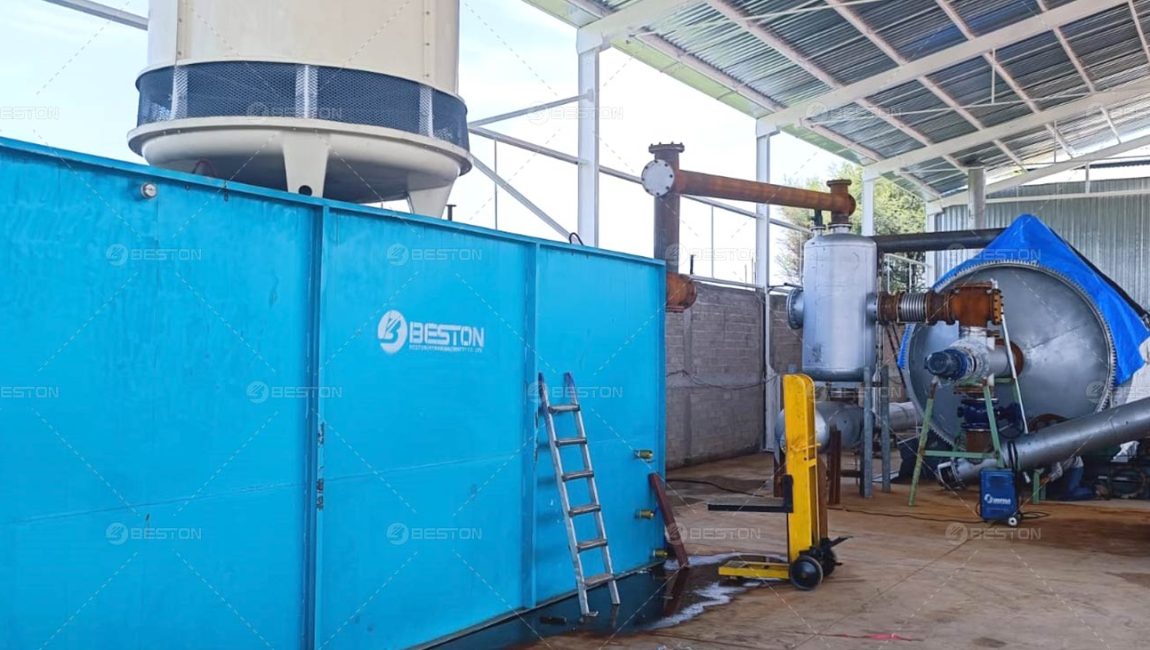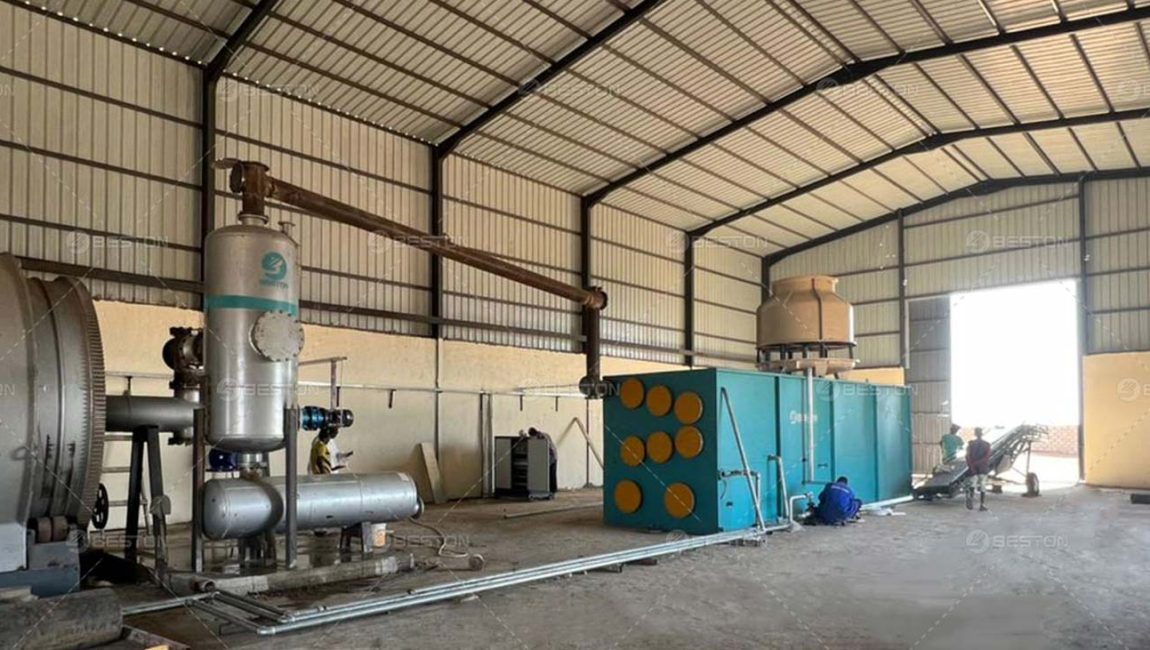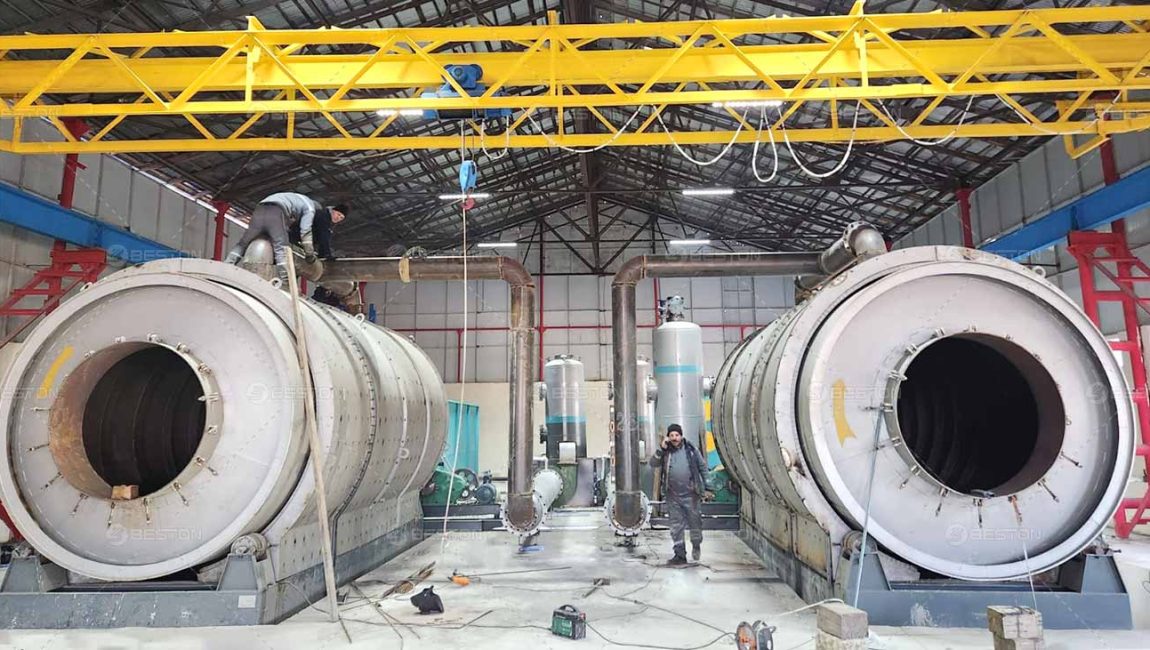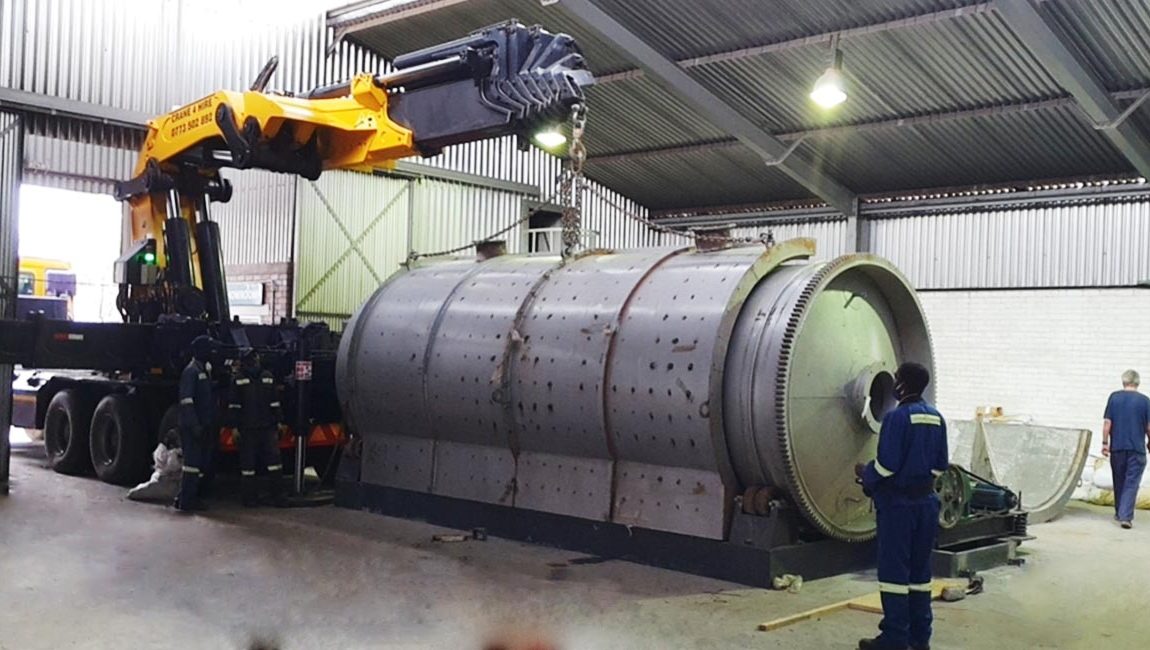Extracting pyrolysis oil from tires has emerged as an ideal solution for handling waste tires in recent years. With 1 billion tires reaching the end of their lifespan annually, only 40% are recycled. The tire pyrolysis oil recovery project is highly favored due to its effectiveness, environmental friendliness, resource utilization, and promising economic returns.
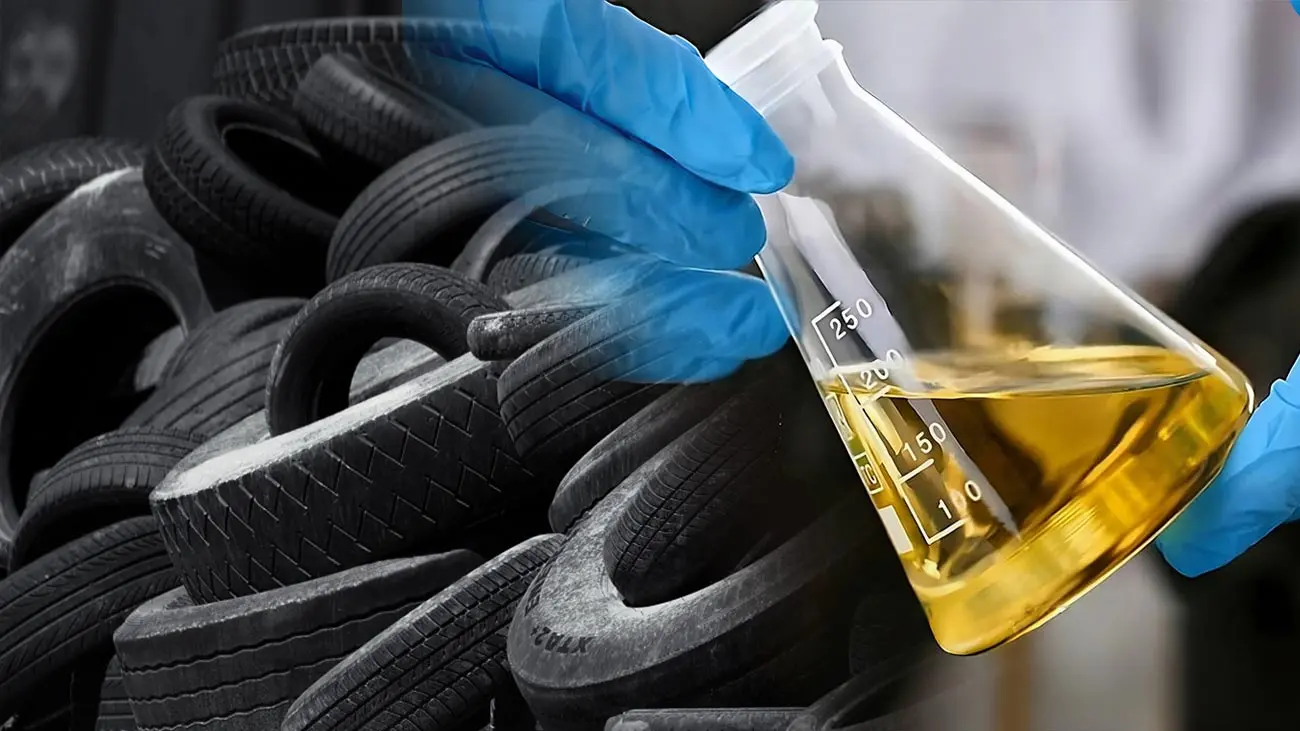
What Is The Pyrolysis Oil from Tires?
The pyrolysis oil from tyres is a complex mixture of hydrocarbons. It is obtained as a valuable fraction from the thermal decomposition of waste tires. Under anaerobic conditions, large molecules of the tire are affected by the heat and decomposed into simpler molecules, yielding pyrolysis oil, carbon black, and syngas.

Why Is Extrating Oil from Tyres Pyrolysis So Popular?
Traditional tire recycling methods are flawed
Traditional tire recycling methods often face challenges such as limited effectiveness in handling all components of tires (steel and fabric) and environmental concerns.
- Accumulation & Landfilling: land occupation, fire risk, etc.
- Buring for heat: harmful substances emission like dioxins, etc.
- Retreading: limited number of retreading; performance degradation risks;
- Rubber powder production: low resource utilization rate; limited demand for rubber powder.
Pyrolysis fuel oil has better economic value
The furnace oil from waste tyres has good economic value due to its applications. It is favored by investors.
- It can be directly utilized as fuel for combustion, providing energy to cement plants, boiler factories, power plants, and more.
- It can be further refined into non-standard diesel which can be used for standard diesel production.
How to Get Pyrolysis Oil from Tires?
High-temperature(280-350℃), low-oxygen pyrolysis reaction is the key to getting pyrolysis oil from tyres plant. You can efficiently extract oil from waste tires by utilizing the latest pyrolysis plant designed by Beston Group. You can find detailed information about the waste tyre pyrolysis process here.
How Much Oil Is In Tyre Pyrolysis?
The yield of pyrolysis oil from tires varies depending on the type of tire. On average, the oil yield ranges from 35% to 50% by weight of the tyre feedstock. This implies that approximately 3.5 to 5 tons of pyrolysis fuel oil can be obtained from 10 tons of waste tires. For more about the oil yield of various types of tires, please contact Beston Group!
- Truck tires have a yield of 45% to 52%.
- Car tires have a yield of 40% to 45%.
- Motorcycle and bicycle tires yield around 35% to 40%.

Tyre Pyrolysis Oil Quality Report
The quality of pyrolysis oil from tires is influenced by factors such as tyre composition and pyrolysis conditions. Oil testing includes parameters such as calorific value, ash content, flash point, etc. Here’s a summary of the tire oil testing report:
- All parameters are generally within or better than the standard range.
- The calorific value of tire pyrolysis oil reaches 10200 kcal/kg.
Note: The test report is for reference only. The tested oil is produced by Beston tyre pyrolysis plant.

What Is Pyrolysis Oil from Tires Worth?
Pyrolysis oil from tyres plant holds significant value in the market as a sustainable alternative to fossil fuels. In 2022, the market for TPO was valued at approximately USD 328.6 million. Projections suggest that this market is expected to grow steadily, with a compound annual growth rate (CAGR) of over 5.4% between 2023 and 2032. This growth reflects the increasing recognition of TPO as an environmentally friendly option compared to traditional fossil fuels, driving demand for its applications in various industries.
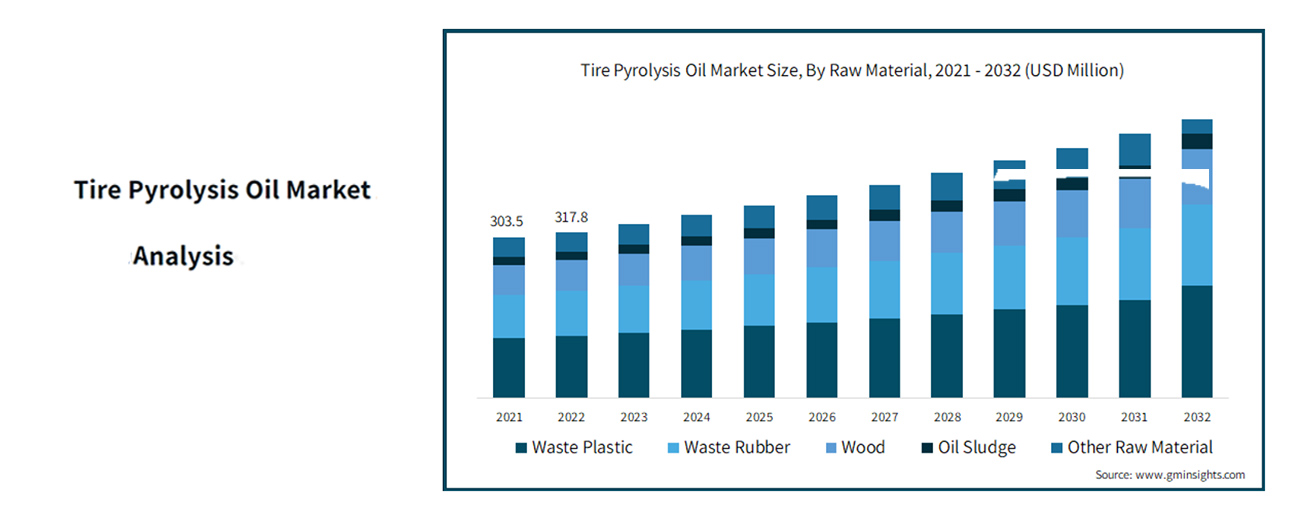
How to Further Improve Value of Tire Pyrolysis Fuel Oil?
Refining pyrolysis oil through distillation is a common method utilized to improve the quality and value of tire pyrolysis oil. This process involves heating the pyrolysis oil and separating it into different fractions based on their boiling points. This further allows the removal of impurities, producing fuel oil product with improved performance and broader applications. In fact, some customers who have purchased tire to oil plant from Beston Group also purchase distillation equipment to further improve the quality and competitiveness of their oil products.

Some FAQs about Pyrolysis Oil from Tires
Is it possible to simultaneously pyrolyze tire and plastic to obtain pyrolysis oil?
It is not recommended to pyrolyze tires and plastic simultaneously. It’s better to handle them separately. This because:
- Plastic pyrolysis can lead to wax oil clogging, which may require a catalytic tower system. However, this problem does not occur in tire pyrolysis.
- The carbon black obtained from tire pyrolysis can be further processed and utilized, while the residues of plastic pyrolysis are typically general industrial solid waste. Therefore, mixing pyrolysis will reduce the value of the carbon black from tire pyrolysis.
Can tire pyrolysis oil be used to produce diesel?
After further distillation to remove gasoline components, non-standard diesel fractions can be separated from pyrolysis oil. These non-standard diesel fractions can then undergo further processing and blending processes to produce commercially compliant diesel.
Can pyrolysis oil from waste tires be used as fuel for electric generators?
After further distillation to remove gasoline components, the obtained non-standard diesel fraction can be used for power generation in heavy fuel oil generators.
How long can 1 ton of tire pyrolysis oil sustain electricity generation?
Assuming the oil yield of 40%, 1 ton of tires can yield 400kg of pyrolysis oil. After distillation to remove non-standard gasoline components, approximately 50% of non-standard diesel can be obtained for electricity generation, which is around 200kg. A 1000kW (1MW) heavy oil generator consumes 220kg/h (producing 1000 kWh in 1 hour). Therefore, 1 ton of pyrolysis oil from waste tyres can sustain electricity generation for approximately 0.909 hours.
Pyrolysis Oil from Old tyres Drives Circular Economy
The extraction and utilization process of pyrolysis oil from tyres exemplifies the principles of a circular economy. By converting waste materials into valuable resources and putting these into market, it promotes resource efficiency, reduces environmental impact, and fosters sustainable economic growth. Embracing tire pyrolysis as part of a holistic waste management strategy enables us to unlock the potential of waste tires while advancing toward a more sustainable future.
Welcome to Consult Beston Group on Tire Pyrolysis to Oil Project
For organizations and entrepreneurs aiming to extract pyrolysis oil from tires, Beston Group offers expertise and tailored solutions. With extensive project experience in tires to oil conversion and comprehensive pre-sales and after-sales support, we look forward to becoming your trusted partner in this endeavor.




